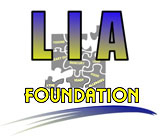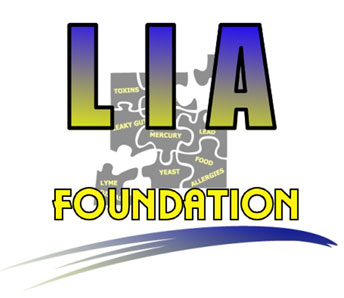|
Now Available!
Published July 1, 2008.
|
287 Pages - $25.95
Ordering Options |
|
Order
Online

Order
by Phone
(530) 541-7200 |
Written in collaboration
with LIA Foundation

Meet
the Authors...

Bryan Rosner
Author, Health Care Journalist
Read Bryan's Preface

Tami Duncan
Contributing Writer
Co-Founder, LIA
Foundation
Read
Tami's Preface
Book
Excerpts:
Tami's Preface
Bryan's Preface
Symptoms vs.
Syndromes
Medical
Hypothesis Article
Robert Bransfield,
M.D.
Enlarged Cover
Index (allow
time to load)
|
|
 Back
to overview page
Back
to overview page
Foreword by
Robert Bransfield, M.D.
What causes autism? If this question could be easily answered we would know by now. Although some cases can be clearly explained, most cannot. Most often, it appears to be caused by a genetic predisposition interacting with environmental triggers. What are the genes that predispose to autism? What are the environmental triggers? What exactly is the pathological process that results in autism? How can we explain the range of different symptoms associated with autism spectrum disorder? Why is the incidence of autism spectrum disorder increasing? What can we do to prevent and treat this condition? These are the basic questions we need to keep asking until they are fully answered. Every possible cause, every possible contributing factor and every possible explanation must be explored thoroughly until these puzzles are solved.
Theoretical biology looks at chronic low grade infections as the cause of many diseases. From general medical research there is a growing body of evidence that infections and immune reactions to these infections contribute to numerous health disorders. Rubella and syphilis have been known to cause autism, but research has demonstrated an ever growing list of other infections also associated with autism that now includes Herpes simplex, Herpes-6, Mycoplasma, Borna virus, Chlamydia, Malaria, Cytomegalovirus, Varicella, Toxoplasmosis, Lyme disease, other tick-borne diseases and yet unrecognized infections. At the same time that this evidence has been accumulating in the scientific literature, many parents, physicians and other clinicians have noticed an association between Lyme and other tick-borne diseases and autism spectrum disorder. The LIA Foundation (a description of which can be found in a few pages) was created to better coordinate efforts to explore this association and it has resulted in better communication and accelerated progress. The weight of evidence associating tick-borne diseases with autism spectrum disorders keeps increasing and further attention to and exploration of this connection is needed until answers are indisputable.
This book will look at some pieces of the puzzle, in particular the Lyme/tick-borne disease association with autism spectrum disorder. This is the first book devoted to the subject. It will not be the last. I hope you find it interesting, educational and thought-provoking. As long as children are afflicted with this condition, we can never be complacent and accept the status quo. We need constant effort until this disease has been fully understood and eradicated.
Robert C. Bransfield, MD, DFAPA
Red Bank, New Jersey
http://www.mentalhealthandillness.com/
|
|
Written, produced, and sold
in collaboration with
The LIA Foundation
 |
Now Available! Published
July 1, 2008
THE LYME-AUTISM
CONNECTION
By Bryan Rosner
With Tami Duncan
Foreword by Robert Bransfield, M.D.
Paperback Book, 287 Pages, $25.95 |
|
Ordering Options: |
|
|
Order By Phone:
(530) 541-7200
|
Order Online:

|
|
